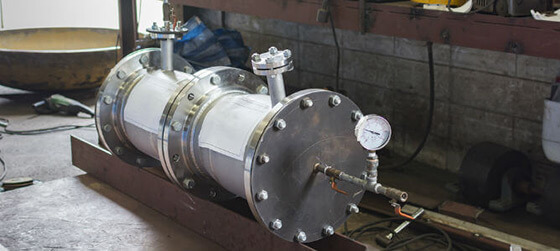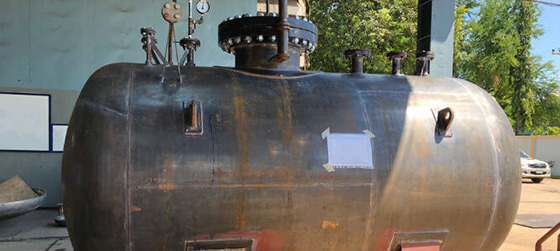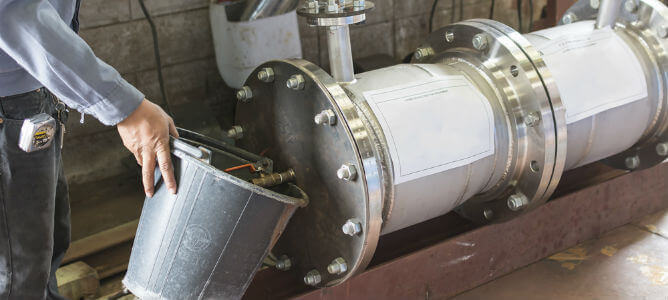Many industrial components undergo stringent pressure testing to determine their structural integrity before use. Conduits such as pipelines and storage vessels undergo various pressure-mediated checks to ensure they meet all relevant industrial safety standards. Depending on manufacturer or operator preferences, pressure testing can be done either hydrostatically or pneumatically.
Contact NiGen today if you’re in the market for pressure testing services from a reputable and experienced company!
Pressure Testing for Pipelines & Pressure Vessels
The purpose of pneumatic and hydrostatic testing is to ensure a pipeline or vessel is free from leaks and can withstand the pressure of normal usage. Before being put into service or returned to service after repairs, many different types of industrial equipment and facilities require this testing. In many situations, government regulations clearly specify what testing is required. In addition, many companies have their own additional internal testing guidelines and policies.
The most commonly used set of specifications for pressure and leak testing is the ASME B31 Pressure Pipeline Code. This code details testing steps and requirements for different types of piping. Hydrostatic testing is performed with a liquid like water, and pneumatic tests use a gas like nitrogen.
When Should You Perform a Pressure Test?
Pressure testing is a vital part of the completion process for industrial equipment and systems. These checks ensure the inspected components function properly under operational conditions without posing an industrial safety hazard to the personnel who operate them.
There are various points in the operational lifespan of industrial systems where pressure testing is mandatory. Newly fabricated pipelines, containment vessels, and fittings must be subjected to a suitable pressure testing method. Further, pressure testing is indicated following equipment maintenance, component replacement, or repair. In both scenarios, the goal remains the same: safety of operation and maximum efficiency.
NiGen Pressure Testing Services
No matter your application or industry, our pressure testing company has the knowledge and expertise required to protect the integrity of your processes. We offer two methods for pressure tests: hydrostatic and pneumatic.


Pneumatic Testing in Houston, Texas
Pneumatic testing uses a gas (typically air, nitrogen, or other inert, non-toxic gases) to assess the structural integrity of a pipeline or vessel. This type of testing requires pressure monitoring and relief devices for maximum operator safety.
What is Pneumatic Testing?
Pneumatic testing involves inserting a gas into the pipeline or vessel and increasing the pressure above the operational level to identify leaks, faulty joints, or other structural issues. This method is especially useful in situations where introducing moisture would be harmful.
Pneumatic Pipe Testing Procedure
Pneumatic testing is typically conducted at pressures at least 10% higher than the maximum specified by the manufacturer. The system is gradually pressurized and held at the test value while inspected for defects using bubble-forming substances. All valves are shut off except the delivery port during this process.
Hydrostatic Testing in Houston, Texas
Hydrotesting is another pressure testing option where a liquid (usually water) is injected into a pipe system to check for structural flaws permitting leakage. Hydrostatic testing allows the detection of leaks that only become obvious at elevated operating pressures.
What Is Hydrostatic Pressure Testing?
In hydrostatic pressure testing a liquid is used to check for leaks before putting a pressure vessel or pipeline into service. The liquid is pressurized within the pipeline or vessel to make sure that it can withstand the pressures of normal usage.
Hydrostatic Pressure Test Procedure
In hydrostatic pressure testing, a liquid is used to check for leaks before putting a pressure vessel or pipeline into service. The liquid is pressurized within the pipeline or vessel to make sure that it can withstand the pressures of normal usage.
In order to test, the pipe or pressure vessel must be filled with a liquid. The liquid used is typically water unless water will damage the pipe or vessel. To meet ASME hydrostatic test requirements, before the test begins, the high points of the pipe or vessel must have vents to allow any air to escape as water is added. All air must be cleared before the test can be completed.


Hydrostatic Pressure Testing for Pipes & Pressure Vessels
For testing, the pressure vessel or pipeline must be filled with a liquid. The liquid is typically water unless it will damage the container. To meet ASME hydrostatic test requirements, before the test begins, the high points of the pipe or vessel must have vents to allow any air to escape as water is added. All air must be cleared before the test can be completed.
Which Pressure Test Method is Right for You?
While both hydrostatic and pressure testing methods can be used to objectively assess equipment integrity, operators must choose the test best suited to their unique systems. For high-pressure operations that are not moisture sensitive, hydrostatic pressure testing is recommended. For low-pressure applications where moisture might damage sensitive components or alter delicate chemical balances, pneumatic testing is the smarter choice.
NiGen Offers Hydrostatic & Pneumatic Pressure Testing Services
At NiGen, we offer cutting-edge hydrostatic and pneumatic pressure testing solutions in Houston, Texas. Our team specializes in applications that leverage our on-site nitrogen generators for the pressure vessel and pipeline industry. We have provided services for thousands of miles of pipeline using the latest nitrogen membrane equipment available. We provide services for purging, pigging, inerting, drying/dehydrating, pneumatic testing, commissioning and decommissioning, chemical cleaning, and leak detection.
To learn more about how we can help meet your unique testing requirements, please contact us today!











